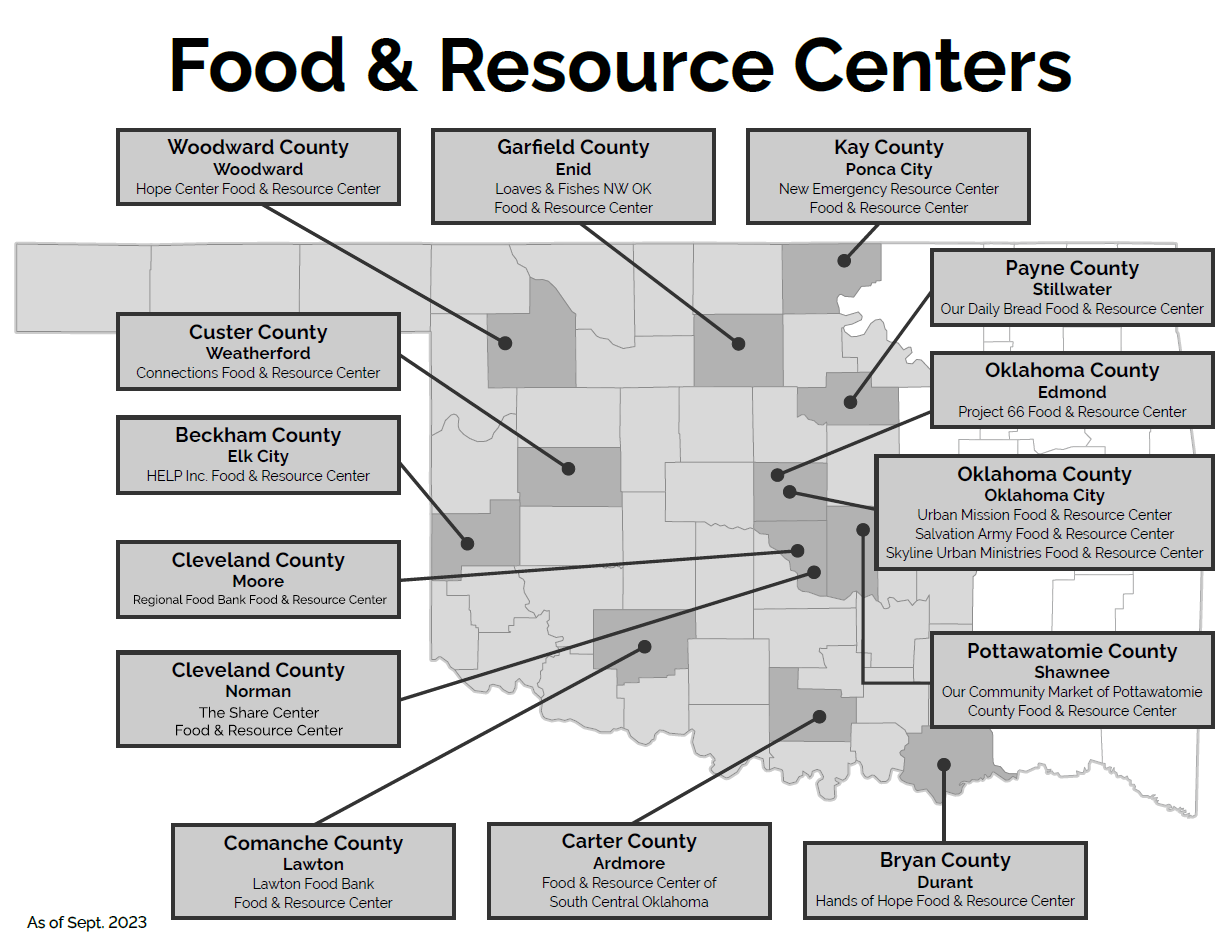
Food & Resource Centers
Food & Resource Centers provide shopper-choice shopping, greater access to food through extended hours and days of operation, increased access to fresh produce and a venue for connecting neighbors with resources available to their families.
The Regional Food Bank launched the Food & Resource Center Program in 2012 to provide the following:
- Shopper-choice shopping that allows neighbors to select food items in a grocery-store like setting. This format not only allows neighbors to select the food items their families will eat and enjoy but also reduces food waste.
- Greater access to food through extended hours and days of operation.
- Increased access to fresh fruits and vegetables to improve health outcomes.
- A venue for connecting neighbors to other resources to help individuals and families become more economically secure.

“Without the extra help it would be more of a struggle than it already is now. Anytime our fridge is full, my boys are excited.”
– Brandy, Hope Center Food & Resource Center shopper
Food Resource Centers provide:
- Greater access to food with extended hours and days of operation.
- Client-choice shopping to improve the overall client experience, giving the client the opportunity to choose foods they need and want in a setting similar to a supermarket.
- An emphasis on nutritious foods, especially fresh fruits and vegetables.
- Additional services/resources and referrals to improve family stability.
Food & Resource Centers also increase access to nutrition education and connect clients to other services available in their community, including services provided by other agencies and nonprofit organizations (dental, vision, employment, housing, etc.).
Current Food Resource Centers Open & Operational
Sept. 2012 – Urban Mission Food & Resource Center, Oklahoma City
Nov. 2012 – Loaves & Fishes NW Oklahoma, Enid
Nov. 2013 – Lawton Food Bank Food & Resource Center, Lawton
Dec. 2013 – HELP Inc. Food & Resource Center, Elk City
June 2014 – Food & Resource Center in Moore, Moore
Nov. 2014 – Salvation Army Food & Resource Center, Oklahoma City
Nov. 2014 – Skyline Urban Ministry Food & Resource Center, Oklahoma City
June 2015 – Hands of Hope Food & Resource Center, Durant
June 2016 – Community Market of Pottawatomie County FRC, Shawnee
Aug. 2016 – New Emergency Resource Agency Food & Resource Center, Ponca City
Aug. 2016 – Weatherford Food & Resource Center, Weatherford
Sept. 2016 – Food & Resource Center of South Central Oklahoma, Ardmore
Our Daily Bread Food & Resource Center, Stillwater
Project 66 Food & Resource Center, Edmond
Hope Center Food & Resource Center, Woodward
Sept. 2023 – Share Center Food & Resource Center, Norman
The Regional Food Bank of Oklahoma, in collaborations with local community partners, plans to open Food & Resource Centers throughout its service area in central and western Oklahoma in order to improve efficiencies and provide greater access to food for the neighbors we serve.
Additional Food & Resource Centers are currently in the planning stages for the following communities: Oklahoma City.
- Each Food & Resource Center receives support from the Regional Food Bank both in the development and operational phases. The Regional Food Bank works within the community to build support and identify collaborative partners. Additional guidance and support is provided for capacity building, site acquisition or build-out, community organizing, funding, technical assistance, and equipment.
- Once established, Food & Resource Centers are designed to be self-supporting. The Regional Food Bank continues to support the Food & Resource Centers with ongoing training, capacity building and priority access to food and equipment grants, as well as guidance on fundraising, marketing and volunteer management.
- Food & Resource Centers provide an opportunity for increased volunteer activity in the community, and assist in raising awareness of hunger.
- The implementation of Food & Resource Centers across the Regional Food Bank’s 53-county service area is designed to provide a more equitable distribution of food. In communities where there are a high number of pantries relative to the population that are operating separately and possibly duplicating services, The Food & Resource Center provides an opportunity for the community to work together to serve neighbors in a more efficient and equitable manner.
- How neighbors get food is one of the most visible changes at a Food & Resource Center. because neighbors get to choose what they want.
- Shopper-choice requires more attention to things like shelf-stocking and customer service, but it also reduces waste and allows people more control over their diets.
- Volunteers have more opportunities to interact with shoppers and find additional ways they can be of service.
- Greater selection of food – and an emphasis on fresh fruits and vegetables.
- The shopping area looks just like a grocery store – with shelves of food, freezers and coolers.


